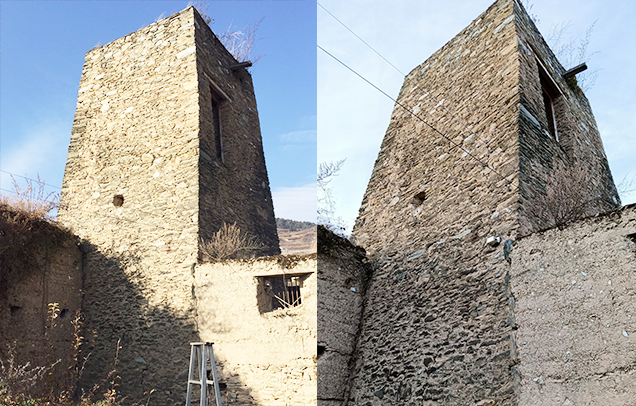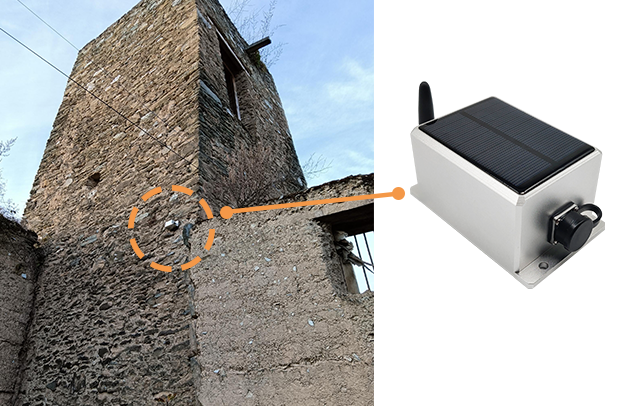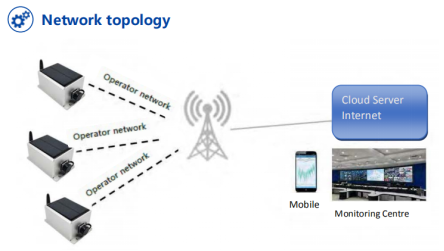Background
In the northwest of Wenchuan County, Sichuan, stands a lofty buwa mountain, where lives an ancient southern Qiang nationality with a history of thousands of years .In the Qiang village with an altitude of more than 2000 meters, all the houses are made of yellow mud.These heritage buildings are treasure inherited from the mysterious Qiang culture and national key cultural relics protection unit in Wenchuan. It has entered China's preparatory list for applying for world cultural heritage.
These buildings were seriously damaged in the 2008 Wenchuan earthquake. At present, the protective construction is imminent, and there is an urgent need to establish a scientific real-time monitoring, early warning and evaluation system.

Challenge
1. These heritage buildings are mainly made of yellow mud. After hundreds of years, they have become fragile and the damage is not easy to detect. Moreover,the power supply and wiring of the building are difficult;
2. High altitude and complex geographical environment.Frequent natural disasters are easy to cause irreversible damage;
3. Due to the dangerous terrain and inconvenient traffic,the monitoring personnel needs to spend a long time, the workload and difficulty are large, the timeliness and continuity cannot be guaranteed;
4. From data collection to early warning, the process is lengthy ,the processing time may be delayed in case of emergency.
Solution
There are three loess buildings, two stone buildings and an ancient wall of Jiangwei city site in buwa's ancient building protection project. Bewis has installed a "health support system" for the building body, which is used for long-term and real-time observation of the tilt change and health status.
The core sensor adopts Bewis high-precision wireless inclinometer sensor NB-WM400,which has several unique patented technologies. Different from the traditional inclinometer sensor, the product has a built-in high-performance rechargeable lithium battery. All internal circuits are optimized and designed to automatically enter the low-power sleep mode, and the acquisition frequency can be set by the user, the highest accuracy reaches 0.005 °, and supports NB lot and GSM network modes.
The monitoring data can be uploaded to the cloud through the narrowband IOT or 2G network. The staff can master its health status in real time and evaluate the risk level of the structure through big data analysis. When the monitoring value reaches the threshold, the platform will automatically give an early warning through SMS, app and other ways.


Outcome
1. Real time, high-frequency, long-term and stable comprehensive monitoring of the inclination and other factors, change "passive rescue protection" to "active preventive protection", which effectively avoids and reduces the occurrence and loss of accidents;
2. No need to wire, easy installation and low cost, greatly reduces the workload of manual monitoring,reduces the cost of manpower and various monitoring;
3. No damage to the building structure, and no affection to the appearance of ancient buildings and the tourist experience;
4. This application is of great significance to the environmental and structural protection of ancient buildings in Sichuan, and also provides a more scientific and effective way for the protection of ancient buildings and cultural relics.

 +86 189 2129 2620
+86 189 2129 2620
+86 176 0611 8008 sales@bwsensing.com
sales@bwsensing.com














